What's the Best Subcompact Crossover?

What makes a subcompact crossover?
That’s a question with many different answers, depending on who is asked. But for us, it means high-riding hatchbacks with optional all-wheel drive, measuring less than 170 inches in overall length. Sorry Kia Soul, Subaru Crosstrek and Hyundai Tucson, you don’t quite cut it.
Get the Flash Player to see this player.
But this year there has been a huge influx of subcompact crossovers. Four new entries have joined the trio of existing models, making the field a lucky seven. First, there are the veterans, the Nissan Juke, the refreshed Mitsubishi Outlander and the somewhat new to us Chevrolet Trax. Taking them on in hopes of being king of the baby crossovers are the new comers, the Honda HR-V, Fiat 500X, Jeep Renegade and Mazda CX-3.
After a week of evaluating, deliberating and contemplating, the scores were added up and a winner emerged. Some of the results may be surprising.
7th Place: Nissan Juke
The Nissan Juke is an old dog when it comes to baby crossovers. First introduced in 2011, the Juke shocked the world when the wraps were removed from this crazy-looking crossover.
At the heart of the Juke is a 1.6-liter turbocharged four-cylinder engine making 188 hp and 177 lb-ft of torque. It has the most powerful engine here and it feels like it. When equipped with the optional torque-vectoring all-wheel-drive system, the only gearbox available is a CVT that isn’t as smooth and refined as some other transmissions here.
SEE ALSO: Nissan Juke SL AWD Review
Still, this drivetrain delivered the best in test observed fuel economy of 31.4 mpg. And, the engine is one of the quieter ones under normal operation.
But that’s about all that’s quiet when it comes to the Juke. The cabin lets in a lot of road noise and the styling is anything but subtle, especially when garnished with two-tone trim pieces like our test vehicle.
Driving dynamics are great, only bested by the CX-3 in this test. That does lead to some of the harshest ride qualities, though, and front seat comfort isn’t that great either. The Juke really is more of a car than a crossover and it shows with its rear passenger and cargo space. With 36.7 inches of headroom, no adults should ever be subjected to sitting in the back of the Juke. And if you plan to take this Nissan on a weekend getaway, pack lightly.
The Juke remains by far the funkiest crossover available on the market. But it could really benefit from an added dose of practicality and refinement, especially in the face of the new competition.
LOVE IT
- Engine power
- Unique looks
- Handling
- Fuel economy
LEAVE IT
- Rear seat space
- Cargo room
- Unique looks
- Ride quality
6th Place: Chevrolet Trax
The Chevrolet Trax may be the least inspiring vehicle to look at in this comparison, but that shape is about function over form. The tall, narrow body and low ground clearance leads to a lot of interior space. The Trax was also rated as having the best rear seat for overall comfort in this comparison. The cargo space is also decent, offering a ton of height if not much width.
It’s too bad things aren’t as good up front. The driving position is not the best, as the seatback feels like a hard board. The Trax may be new to America, but it has been around in other countries for a few years and it shows inside.
SEE ALSO: 2015 Chevrolet Trax Review
The interior quality is the poorest in the comparison and looks woefully dated. But just because it’s old, doesn’t mean it can’t have cutting edge technology. Like a lot of GM products, the Trax can be had with General’s fantastic on board WiFi option. And while on positives, the tall boxy shape leads to huge windows with terrific sightlines.
The 1.4-liter turbocharged engine has the least amount of power and at highway speeds, it feels like it. It does have good low-end torque, though, and around the city, it is just fine. Body motions on the Trax are well controlled over bumps and the overall suspension setup is one angled more towards comfort than sport.
Overall, the Trax does some things right and with the Buick Cascada’s 1.6-liter turbo, a more premium interior as well as a stylish exterior, the Trax could really be something. But as it stands, there’s an overall lack of refinement that’s a reoccurring theme, evident in the drivetrain vibrations that flourish through the steering wheel and seat. Close, but not quite there, the Trax is relegated to a sixth-place finish in this comparison.
LOVE IT
- Rear seat space
- Cargo capacity
- Sight lines
- On-board WiFi
LEAVE IT
- Styling
- Interior quality
- Engine power
- Front seat comfort
5th Place: Jeep Renegade
All new this year, the Jeep Renegade is easily the most SUV-like vehicle in this comparison. Stiffly sprung and ready to head for the mud, a lot of the Renegade’s mountain climbing persona has to do with the Trailhawk package that makes this baby Jeep a semi-legitimate off-roader.
Inside, there are some cheesy features like the dirt redline on the tachometer, the Jeep grilles on the speakers and various Jeep branding etched into a multitude of trim pieces. Still, it seems to work on this crossover, as the Renegade is all about style.
SEE ALSO: 2015 Jeep Renegade Review
The vehicle’s boxy shape and familiar Jeep styling cues ensure everyone on the road knows that this is indeed a Jeep. There is a ton of headroom inside, front and rear, but sight lines aren’t great for how boxy the Renegade’s shape is.
The Renegade is, by far, the heaviest vehicle on hand with a curb weight reaching 3,573 pounds in Trailhawk form. A byproduct of this weight is poor handing and the worst in observed fuel economy of 23.8 mpg. Even with a 180-hp 2.4-liter engine, the Renegade doesn’t feel all that quick, thanks to its weight and high friction tires. Plus, the nine-speed automatic is slow to react, especially when downshifting. What’s the point of having all these gears if the vehicle isn’t using them properly?
Still, the Renegade is one of the most premium feeling crossovers in the test, as it should be considering a price as tested that comes in at an eye-opening $33,750. For that price, a decently equipped compact crossover like the CR-V or Cherokee can be had.
And there’s more, the Renegade has been beefed up so much to handle off-road conditions that it’s lost a lot of on-road traits you might be looking for in a small crossover like fuel efficiency, handling and a smooth ride. Yet, the Renegade is not a true off-roader either. It’s kind of left in the middle somewhere. Take away the Trailhawk package and the Renegade begins to make more sense, but unfortunately for Jeep, there are other subcompact crossovers that make even more sense.
LOVE IT
- Interior space
- Interior quality
- Off-road ready
- Styling
LEAVE IT
- Weight
- Price
- Transmission
- Fuel economy
4th Place: Fiat 500X
The Fiat 500X is a platform mate to the Jeep Renegade and another Italian-built entry from FCA. Like the Renegade, the 500X uses a 180 hp 2.4-liter four-cylinder engine and nine-speed automatic transmission. But with 300 pounds less weight, the engines feels properly powerful in the 500X. The transmission even feels less delayed in its actions, even though it’s the same mechanics. It could be a result of the Renegade Trailhawk’s programming or just Fiat’s slightly different tuning.
SEE ALSO: 2016 Fiat 500X Review
The 500X is also the better handling vehicle of the FCA twins, with responses similar to that of the HR-V. One strange quirk I noticed in both FCA vehicles is that it takes incredibly high speeds to engage 9th gear. A lot of freeway driving will see no more than 8th gear – not until the needle is well into the high 70-mph range does 9th gear finally engage. And at those speeds, there is some unpleasant wind noise that emits from the back of the 500X.
The 500X features unmistakable Fiat design cues inside and out. We find the 500 styling lends itself better to the 500X than the strange 500L. The interior design is nice and in Trekking Plus trim comes equipped with a ton of features like leather seats, a panoramic sunroof, a heated steering wheel, navigation and parking sensors. The front seats are better than the Renegade’s, but no one is a fan of the uncomfortable round headrests.
The 500X is a better overall package from FCA for this segment than the Renegade, but at an as-tested price of $31,800, it’s still expensive and the Fiat returned the second worse as observed fuel economy. Add in mid-pack levels of comfort and practicality, and the 500X could do no better than finish mid-pack in this comparison test.
LOVE IT
- Engine power
- Styling
- Features
- Interior quality
LEAVE IT
- Price
- Fuel economy
- Transmission
3rd Place: Mitsubishi Outlander Sport
Well, this is a bit of a surprise. Mitsubishi takes a lot of flak these days from a lot of people, but when it comes to small crossovers, the company was ahead of the curve. The Outlander Sport is the oldest vehicle in this test, yet it still finished a solid third place.
SEE ALSO: Mitsubishi Outlander Sport Review
Easily Mitsubishi’s most competitive offering in North American today, the company has done a lot of things right with the vehicle. It has the second best cargo area, third best rear seat comfort, third lowest as tested price and, of course, by far the best warranty. Power from the 2.4-liter is surprisingly abundant but observed fuel economy was third lowest in test.
The square shape leads to good forward sight lines, but the rear window view is cut off for taller drivers. The interior looks dated, finished in less than desirable materials and the infotainment unit should probably be in a museum by now.
Features included in the 2.4 GT AWC are a strange mix. There’s no leather, navigation or power seat, but it does have a full glass roof, rain sensing wipers and HID lights.
The exterior of Outlander Sport still looks nice still after all these years and the recent update has done enough to keep it modern and competitive. But a lot of other aspects to this vehicle are very average. Engine, transmission, handling, comfort are all average. Add in the practicality, warranty and price though, and it becomes an attractive vehicle for those who want an easy to operate, worry-free crossover for a small family.
LOVE IT
- Practicality
- Comfort
- Price
- Warranty
LEAVE IT
- Interior quality
- Fuel economy
- Infotainment system
2nd Place: Mazda CX-3
Introduced earlier this year, the Mazda CX-3 is easily the most car-like vehicle in this comparison. The controls, seating position and sight-lines all resemble those of a car more than a crossover. Drivers sit the lowest in the CX-3 and it has the lowest roof line.
So it should come as no surprise that the CX-3 drives the most like a car. It has the agility and reflexes to best all contenders here, even the Juke. But like the Juke, it also offers one of the roughest rides.
SEE ALSO: 2016 Mazda CX-3 Review
It’s also down a lot of power compared to the turbo Juke as the CX-3 makes due with a 146 hp 2.0-cylinder four-cylinder engine. But despite the low engine power figure, the CX-3 is the only crossover to come in under 3,000 lbs. as tested, making it the lightest vehicle on hand. It makes the most of the available power and is quicker than a few of the more power crossovers in this test. The engine is very smooth and the six-speed automatic could be the best transmission in the comparison.
The interior is a strange mix. It has one of the nicest designs and on the surface, looks very premium. But a closer look reveals not everything in here is of quality, as Mazda has done a good job masking the cheaper finishes into looking more expensive than they are.
Keeping the CX-3 from taking the overall win is the rear half of the vehicle. Mazda’s baby crossover has the same disregard for rear passengers and cargo space as the Juke. Rear seat passenger room is intimate at best and the cargo area is minuscule, with the smallest hatch opening.
The CX-3 really is a more modern, mature, better equipped crossover designed in the same school of thought as the Juke. That means its stylish, fun to drive but woefully lacking in the utility department. But if hauling isn’t a priority, the CX-3 is an attractive urban warrior.
LOVE IT
- Style
- Handling
- Interior design
- Fuel economy
LEAVE IT
- Rear seat space
- Cargo space
- Engine power
1st: Honda HR-V
Measuring about the same size as the original CR-V, the new HR-V is Honda’s latest entry into the brand’s growing crossover family. Earlier this year, it already won a comparison against the Mazda CX-3 due to its blend of practicality, efficiency and value, so coming first place here shouldn’t be much of a surprise.
From a value perspective, the HR-V is the cheapest in the comparison, costing just $26,720 as tested. But, it still comes with useful options like navigation, leather seats, smart key entry and dual zone climate control. It’s missing some premium options though like a power seat, panoramic sunroof and rain sensing wipers, but, it’s the only vehicle here with Honda’s lane watch camera.
SEE ALSO: 2016 Honda HR-V Review
On the practicality standpoint, the rear seat offers the most legroom, but headroom is tighter than in the Trax or Renegade. Rear cargo room was rated best in test and sight lines all around are great. Front seat comfort is average and the interior is modern, if not a bit boring. Of course, we can’t review a Honda product without mentioning our dislike for HondaLink. Please change it soon.
The HR-V may be the easiest vehicle to drive in a comparison full of simple to operate motoring appliances. All the primary controls are laid out in a logical, easy to understand fashion and the vehicle’s responses are predictable and smooth.
It’s not the best to drive as handling is average and power feels weak. With the smallest, non-turbocharged engine, the 1.8-liter engine in the HR-V makes just 141 hp. It requires a lot of rpms to get the most out of it at which point the engine can get loud. Fuel economy was up there with the CX-3 and Juke for best in test though, just don’t routinely put four adults and a hatch full of cargo in the HR-V.
For the most part, small crossovers are about practicality, value and ease of use. With that in mind the Honda HR-V is the clear winner. With a ton of usable space, low entry price and predictable controls, the HR-V is the best all-around choice in the world of subcompact crossovers.
LOVE IT
- Price
- Practicality
- Ease of use
- Fuel economy
LEAVE IT
- Engine power
- Boring to drive

A 20+ year industry veteran, Mike rejoins the AutoGuide team as the Managing Editor. He started his career at a young age working at dealerships, car rentals, and used car advertisers. He then found his true passion, automotive writing. After contributing to multiple websites for several years, he spent the next six years working at the head office of an automotive OEM, before returning back to the field he loves. He is a member of the Automobile Journalists Association of Canada (AJAC), and Midwest Automotive Media Association (MAMA). He's the recipient of a feature writing of the year award and multiple video of the year awards.
More by Mike Schlee



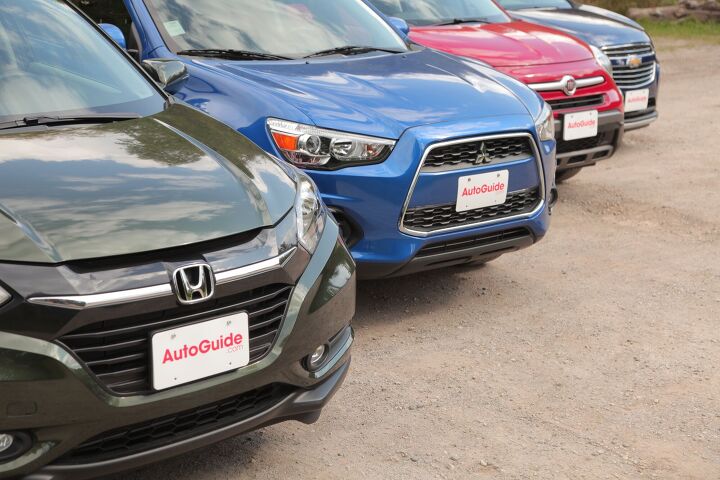





























































































































































































































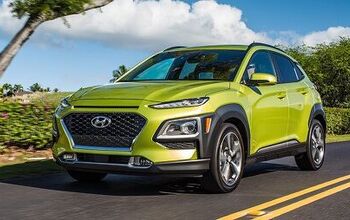

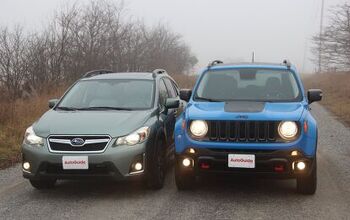

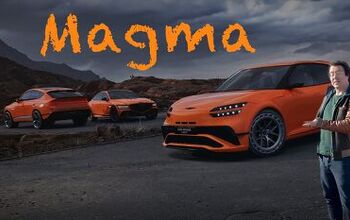
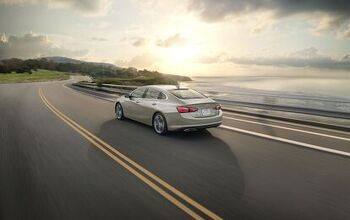








Comments
Join the conversation
You can get a Mazda CX-5 Touring model for just about the same price as the tested HR-V. You'll get more space and more power (with a decent automatic transmission) and despite the increase in size, almost the same fuel economy. The HR-V with CVT is fundamentally flawed with noise under stress (which is frequent). The base model 6-speed manual is probably a better choice as it's lighter and ostensibly quieter with no CVT to wail like a dying cow.
Outlander sport.... Actually does a good beast mode off road. Great value.